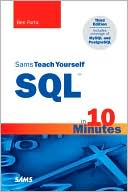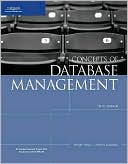Practical Guide to Clinical Data Management
The management of clinical data, from its collection to its extraction for analysis, has become a critical element in the steps to prepare a regulatory submission and to obtain approval to market a treatment. As its importance has grown, clinical data management (CDM) has changed from an essentially clerical task in the late 1970s and early 1980s to the highly computerized specialty it is today.\ Practical Guide to Clinical Data Management, Second Edition provides a solid introduction to the...
Search in google:
The management of clinical data, from its collection to its extraction for analysis, has become a critical element in the steps to prepare a regulatory submission and to obtain approval to market a treatment. As its importance has grown, clinical data management (CDM) has changed from an essentially clerical task in the late 1970s and early 1980s to the highly computerized specialty it is today.Practical Guide to Clinical Data Management, Second Edition provides a solid introduction to the key process elements of clinical data management. Offering specific references to regulations and other FDA documents, it gives guidance on what is required in data handling. Updates to the Second Edition include -A summary of the modifications that data management groups have made under 21 CFR 11, the regulation for electronic records and signaturesPractices for both electronic data capture (EDC)-based and paper-based studiesA new chapter on Necessary Infrastructure, which addresses the expectations of the FDA and auditors for how data management groups carry out their work in compliance with regulationsThe edition has been reorganized, covering the basic data management tasks that all data managers must understand. It also focuses on the computer systems, including EDC, that data management groups use and the special procedures that must be in place to support those systems. Every chapter presents a range of successful and, above all, practical options for each element of the process or task.Focusing on responsibilities that data managers have today, this edition provides practitioners with an approach that will help them conduct their work with efficiency and quality.
Ch. 1The data management plan3Ch. 2CRF design considerations9Ch. 3Database design considerations19Ch. 4Study setup35Ch. 5Entering data43Ch. 6Tracking CRF pages and corrections53Ch. 7Cleaning data61Ch. 8Managing laboratory data75Ch. 9Collecting adverse event data89Ch. 10Creating reports and transferring data99Ch. 11Locking studies107Ch. 12Standard operating procedures and guidelines117Ch. 13Training127Ch. 14Controlling access and security133Ch. 15Working with CROs139Ch. 16Clinical data management systems149Ch. 17Electronic data capture systems153Ch. 18Choosing vendor products163Ch. 19Implementing new systems171Ch. 20System validation179Ch. 21Test procedures187Ch. 22Change control193Ch. 23Coding dictionaries199Ch. 24Migrating and archiving data209App. AData management plan outline215App. BTypical data management standard operating procedures219App. CCRO-sponsor responsibility matrix221App. DImplementation plan outline223App. EValidation plan outline225App. FCDISC and HIPAA227








